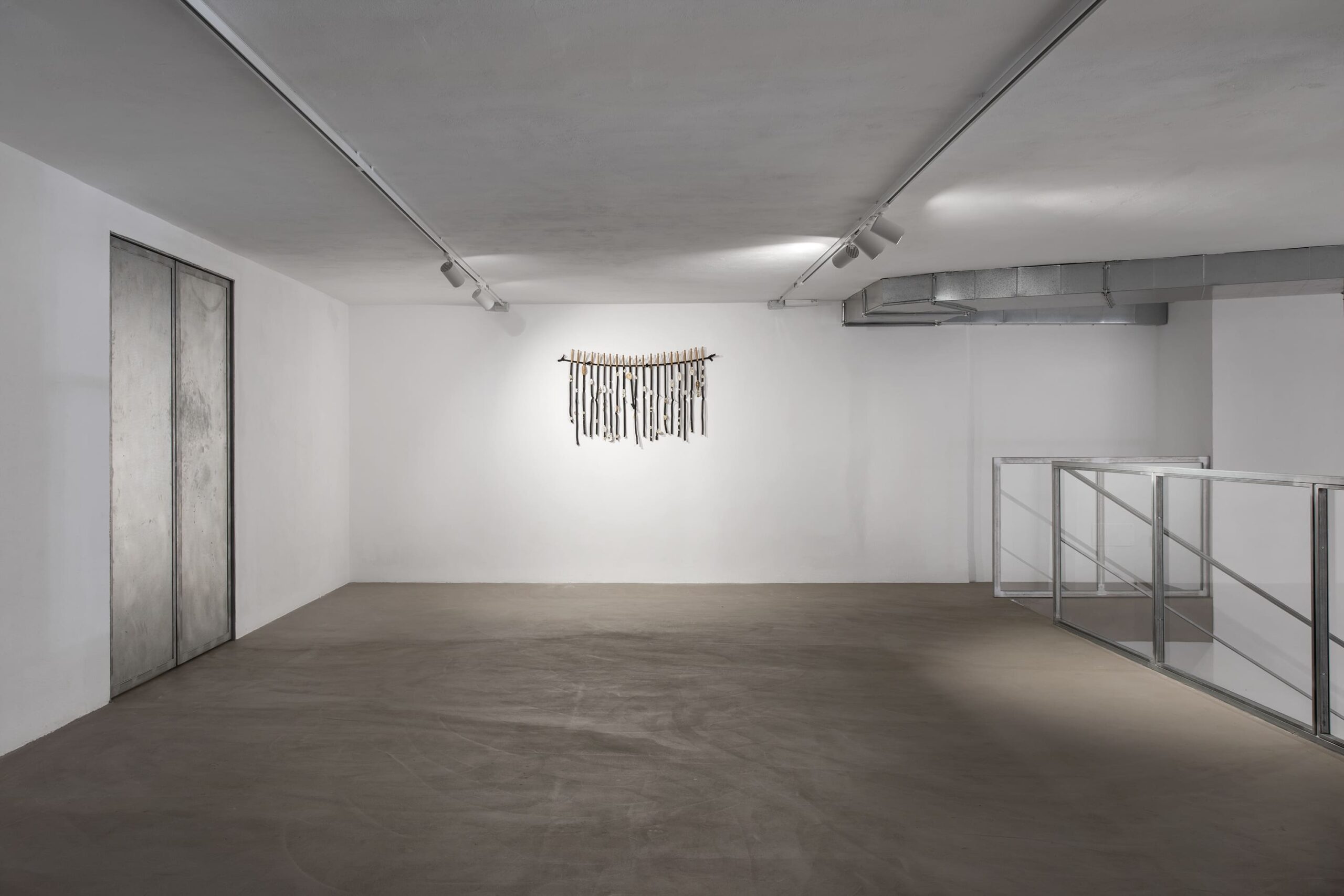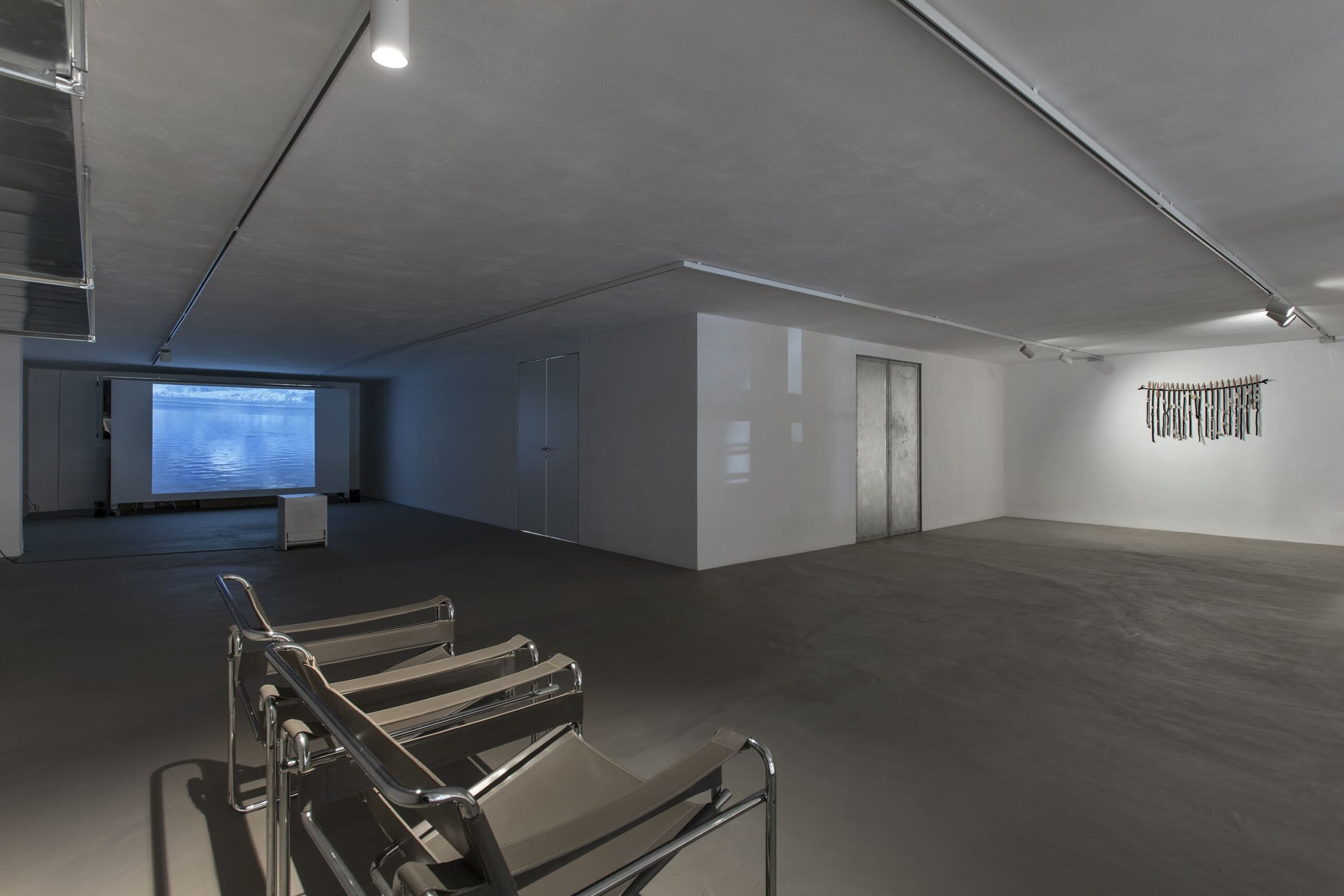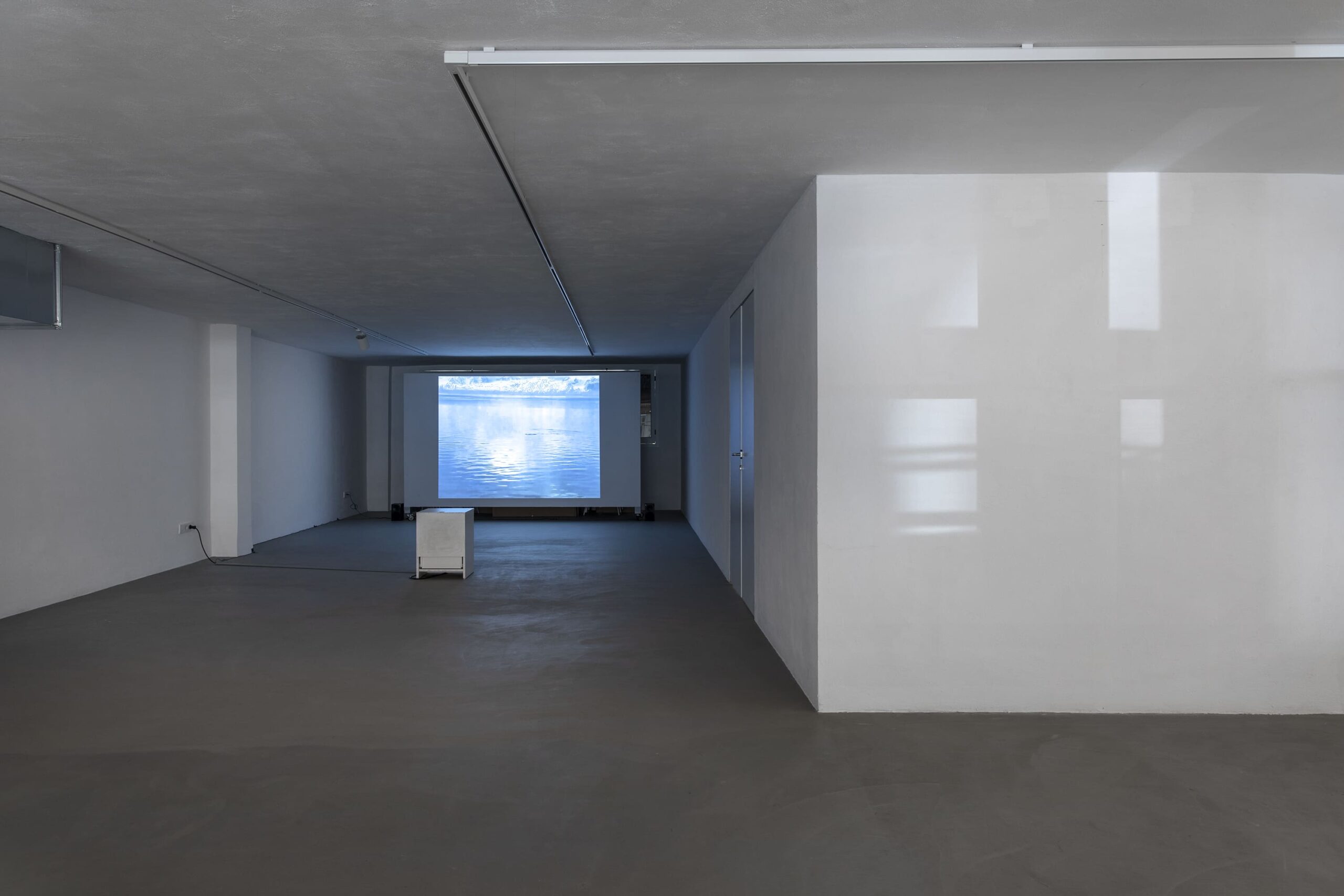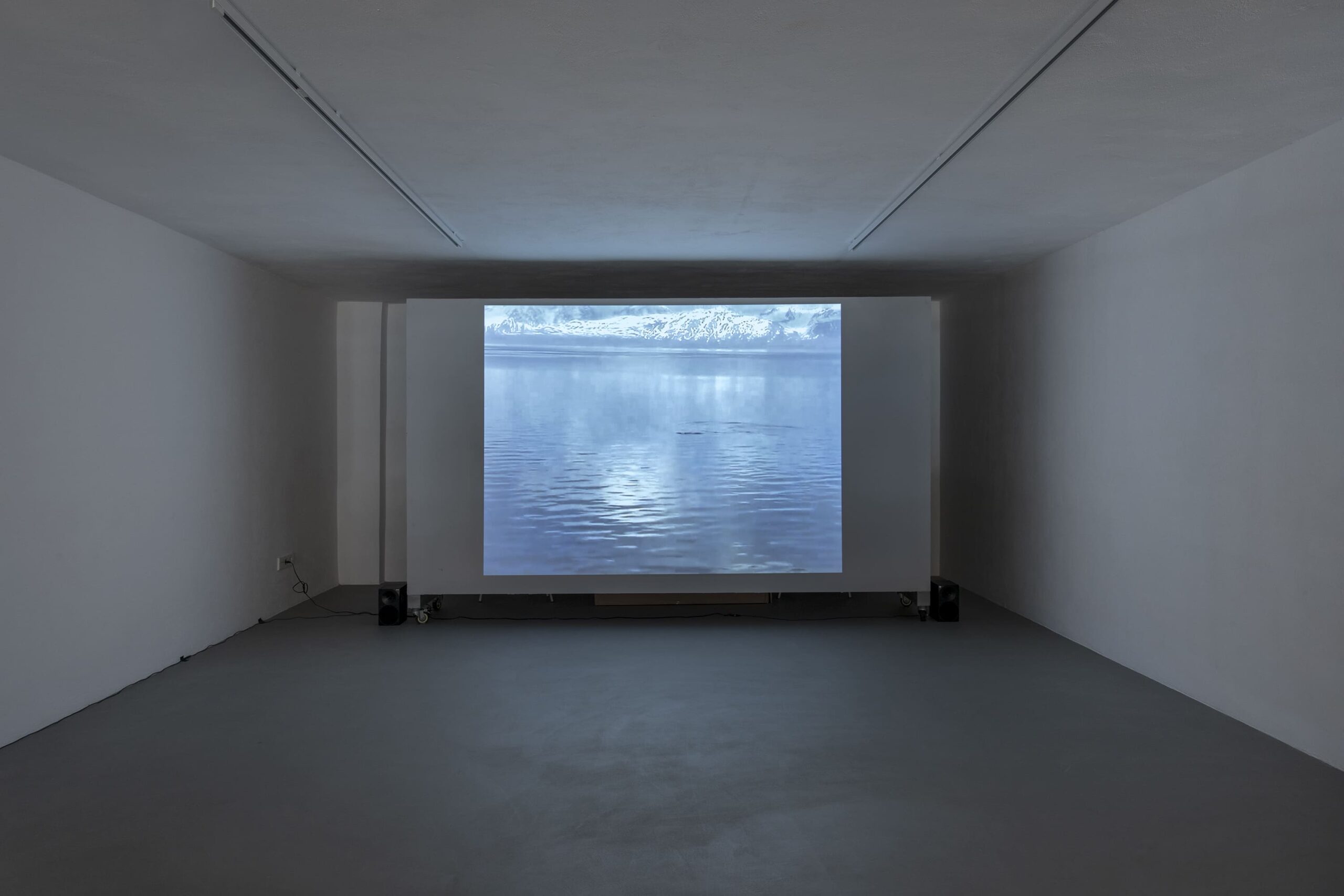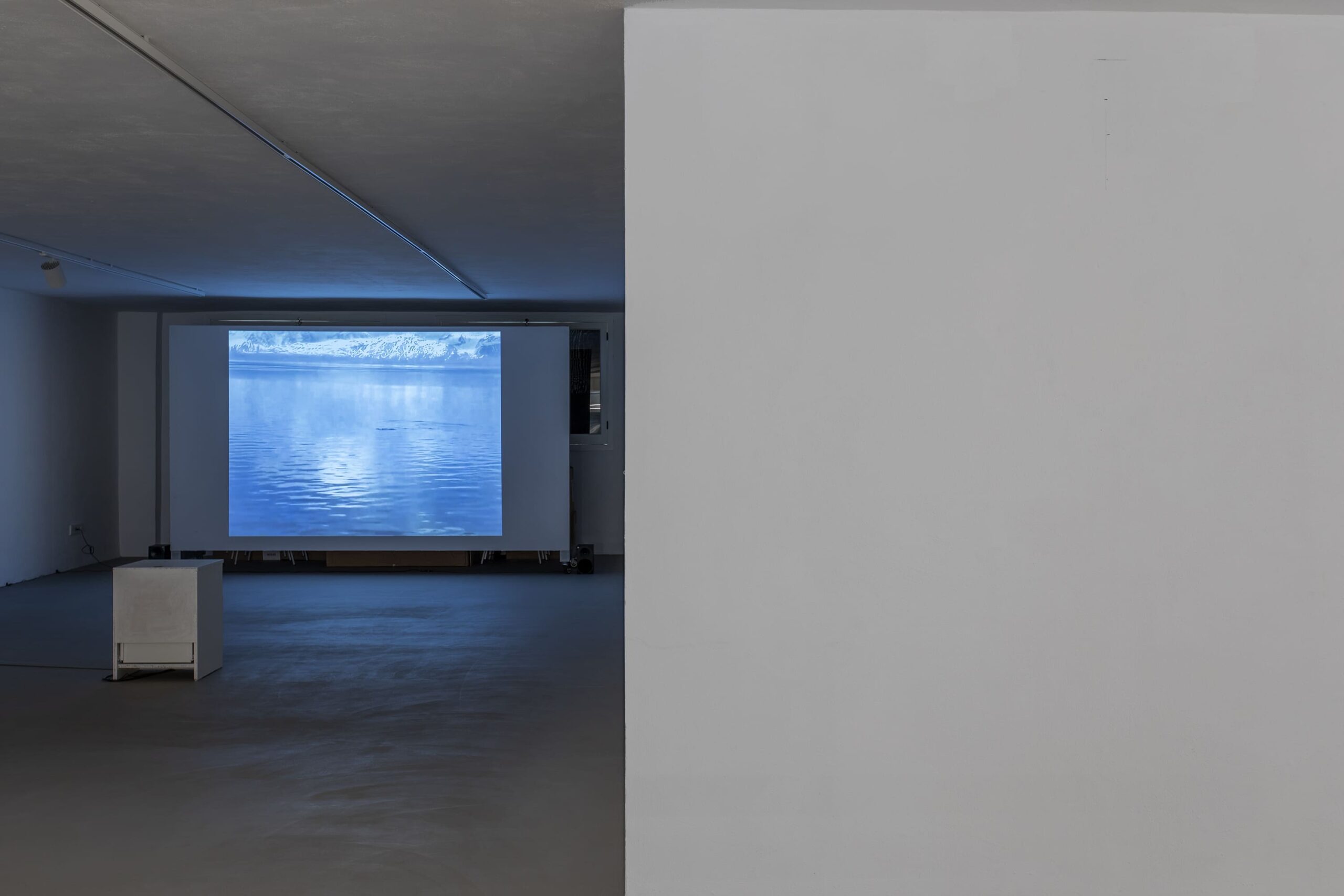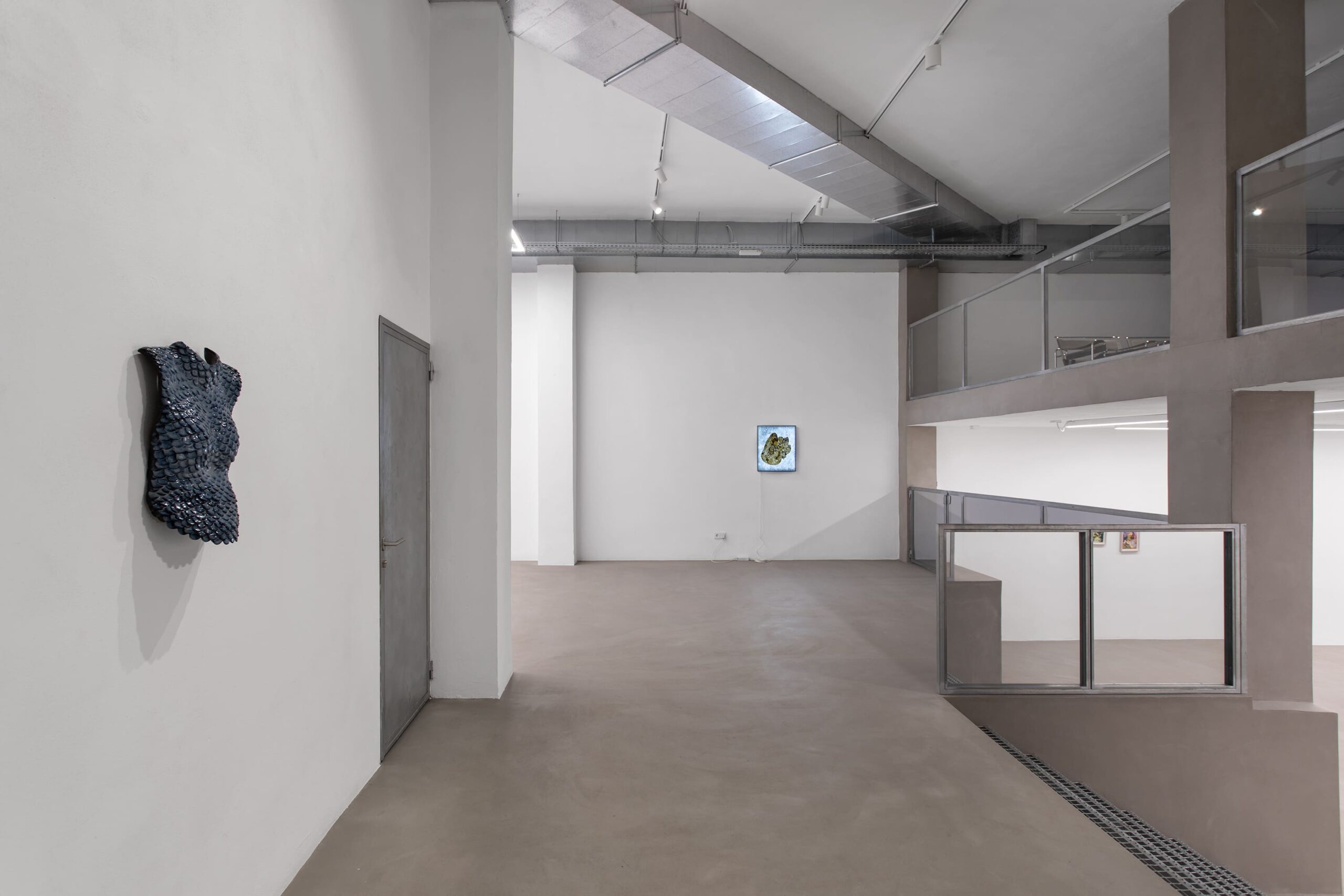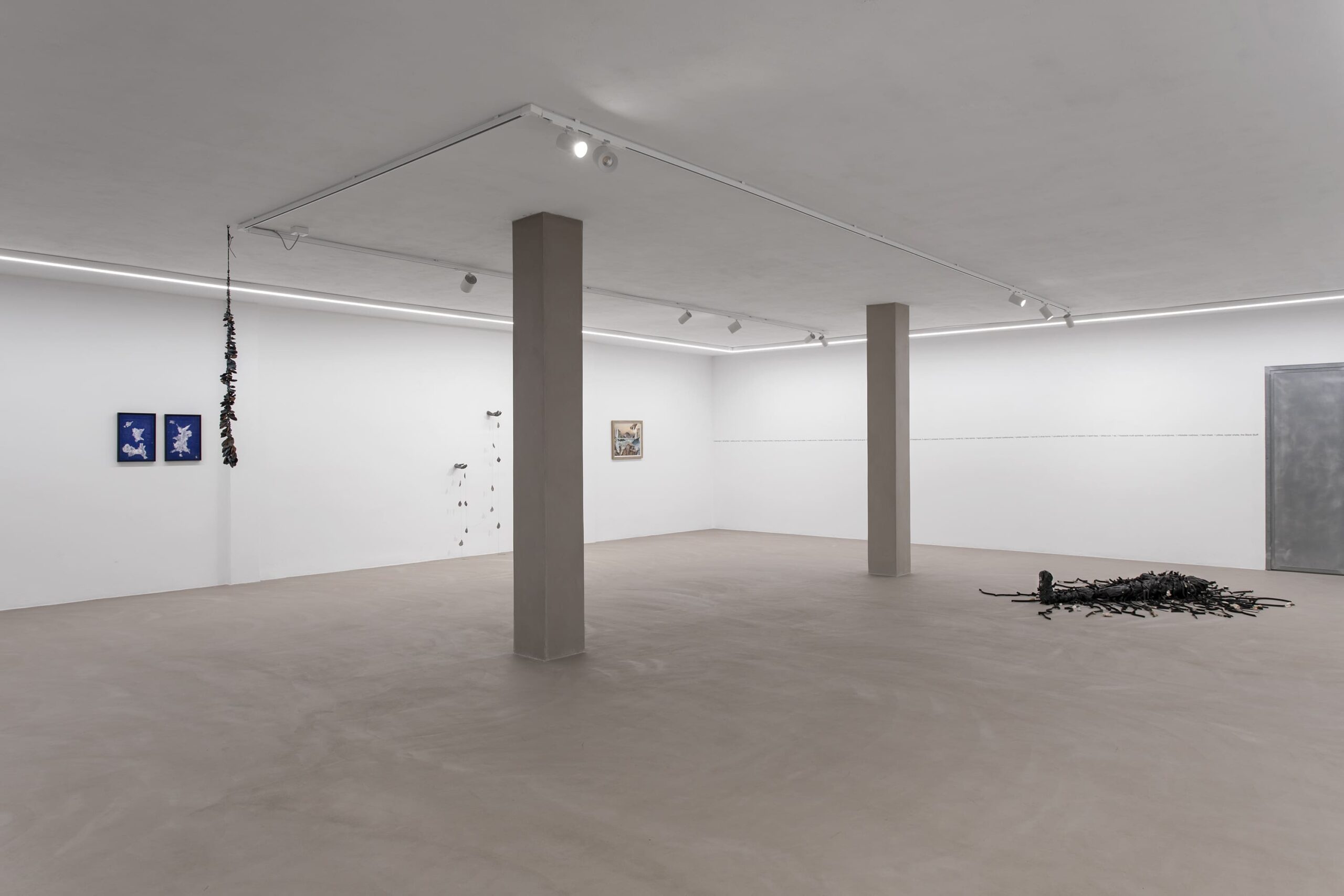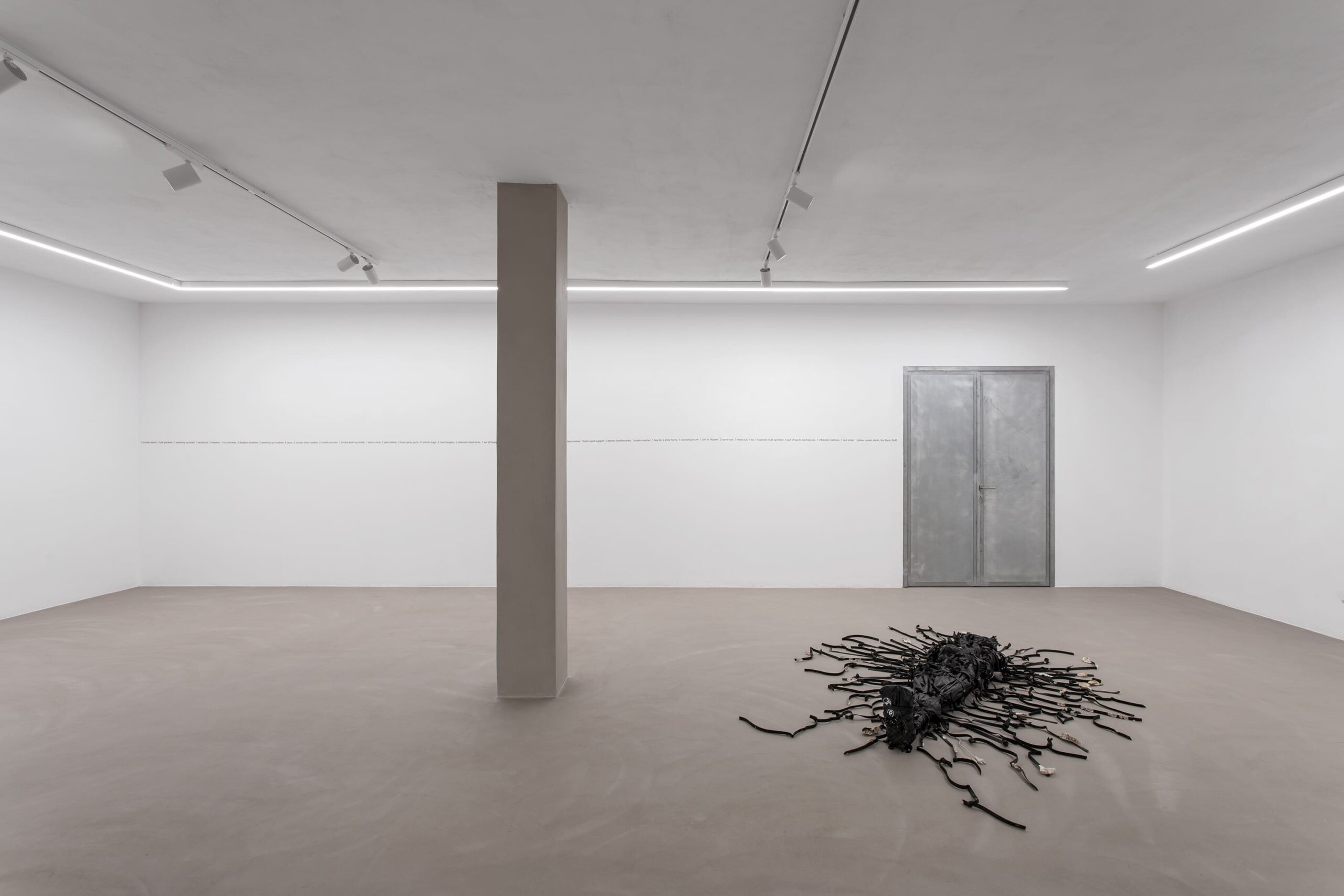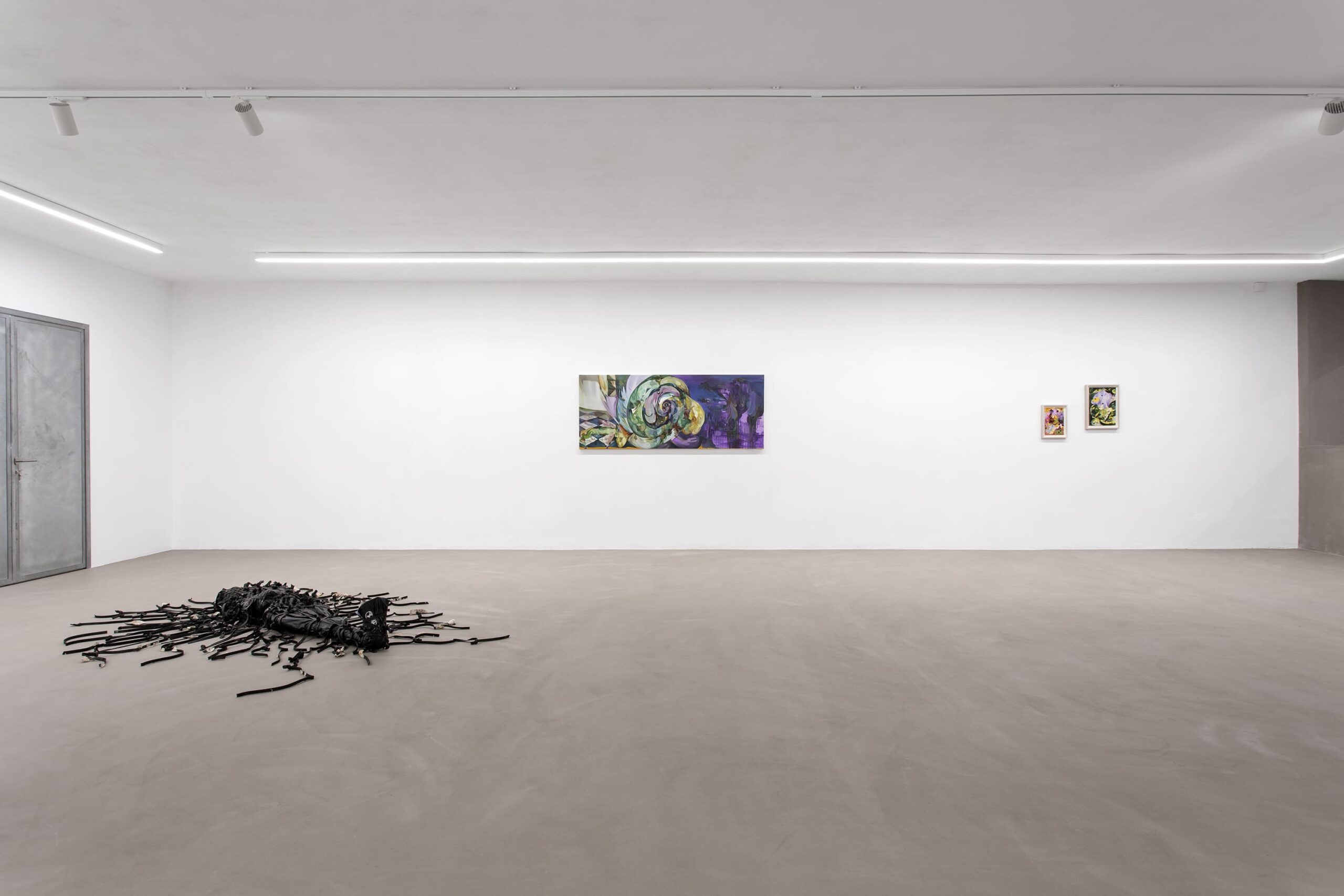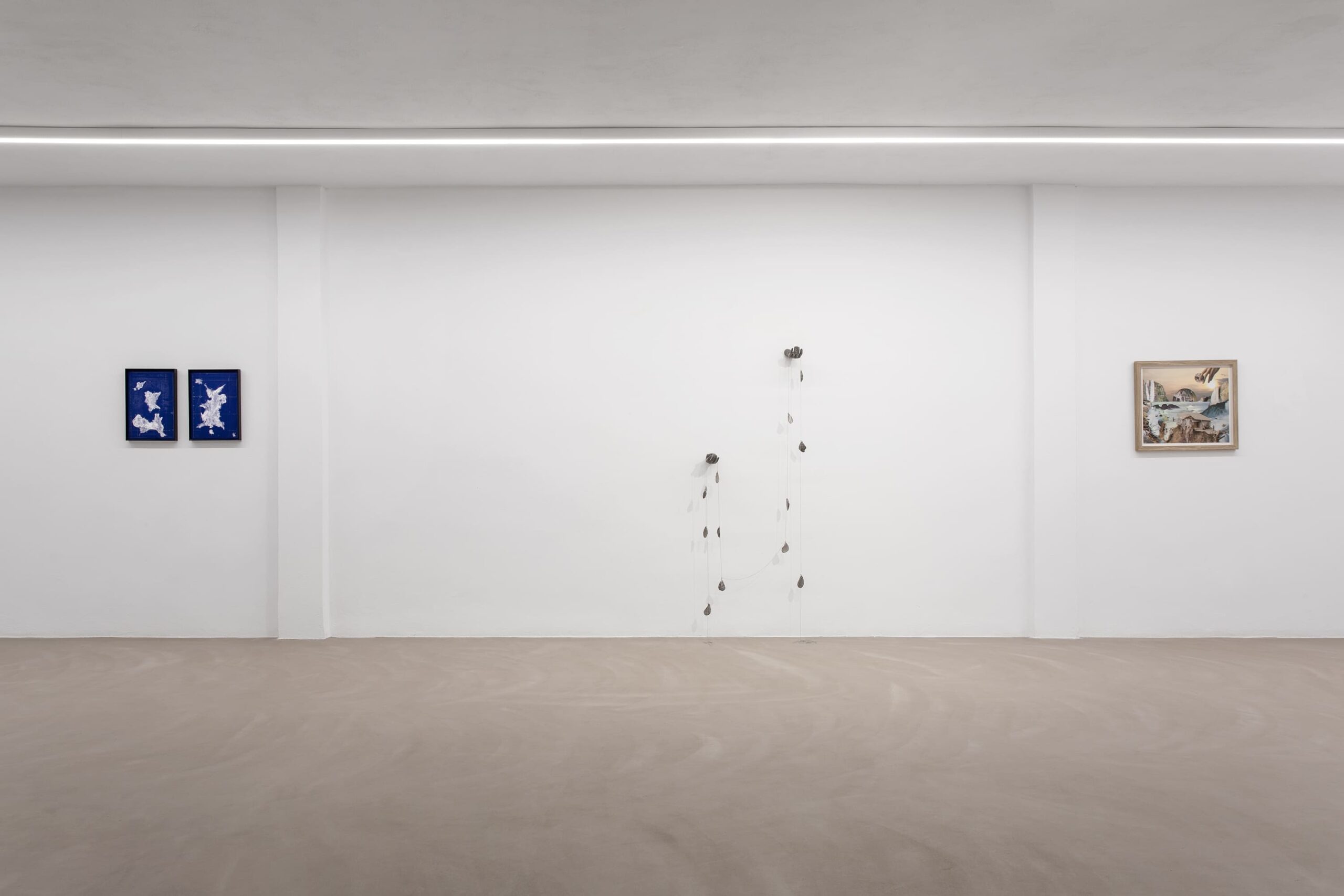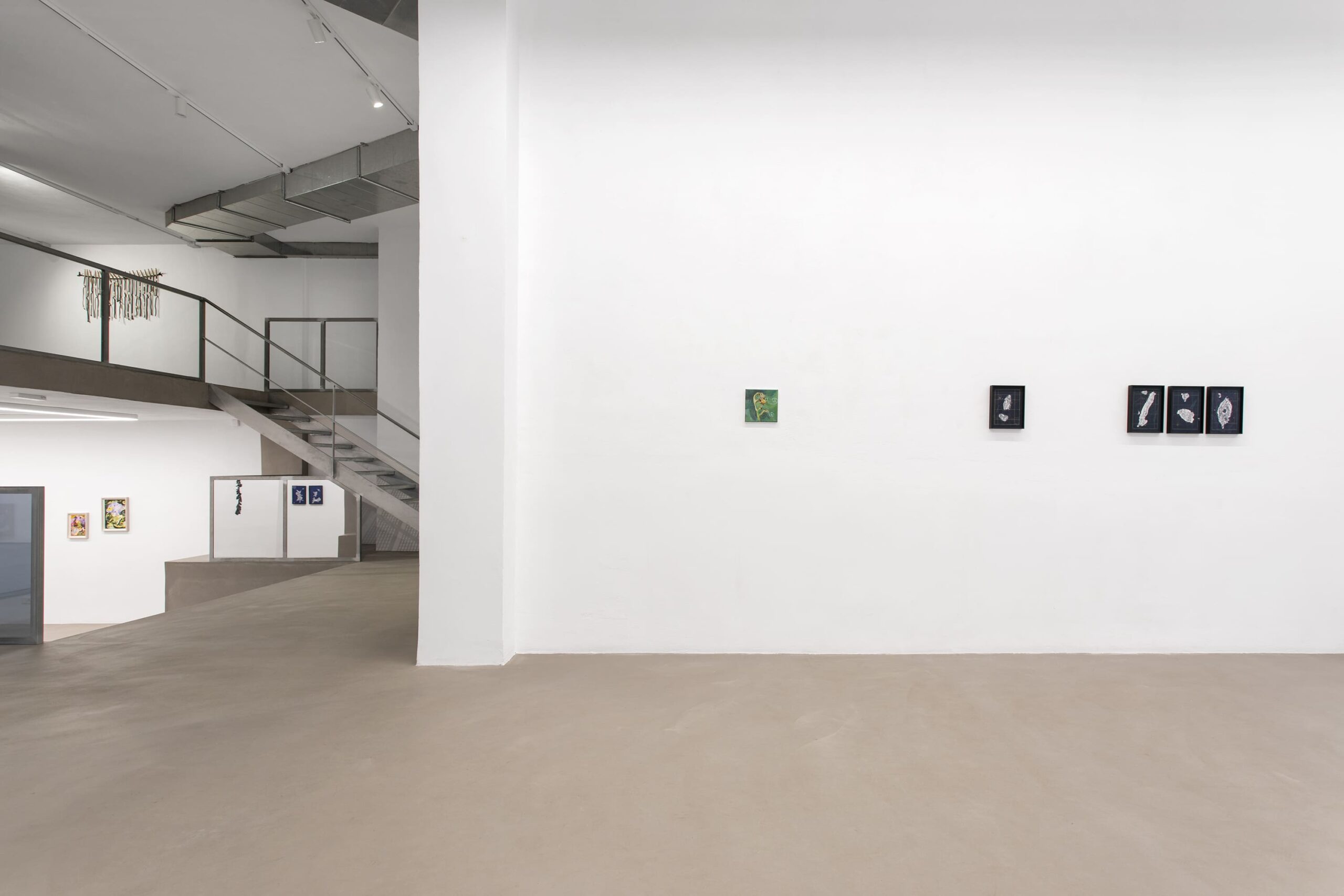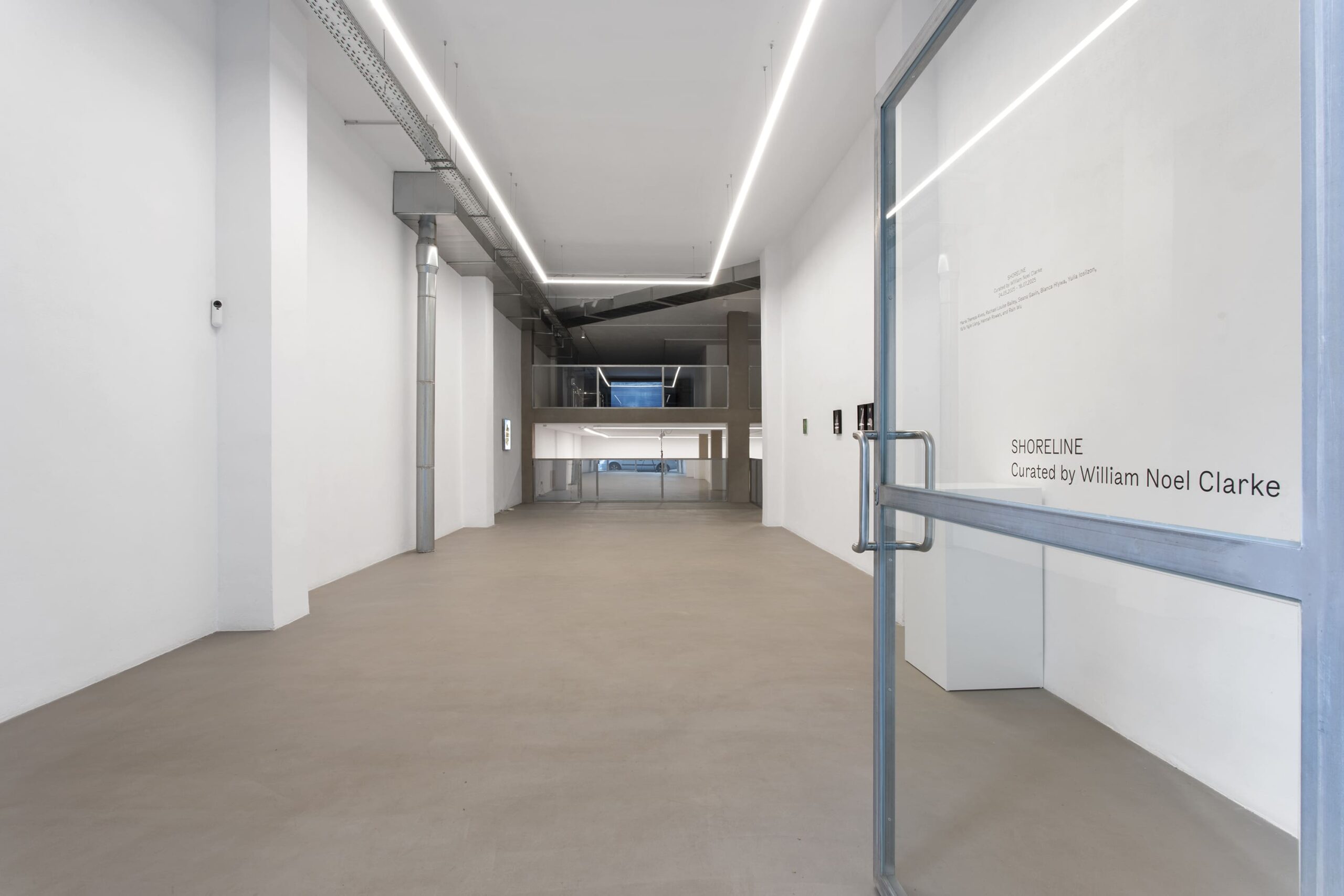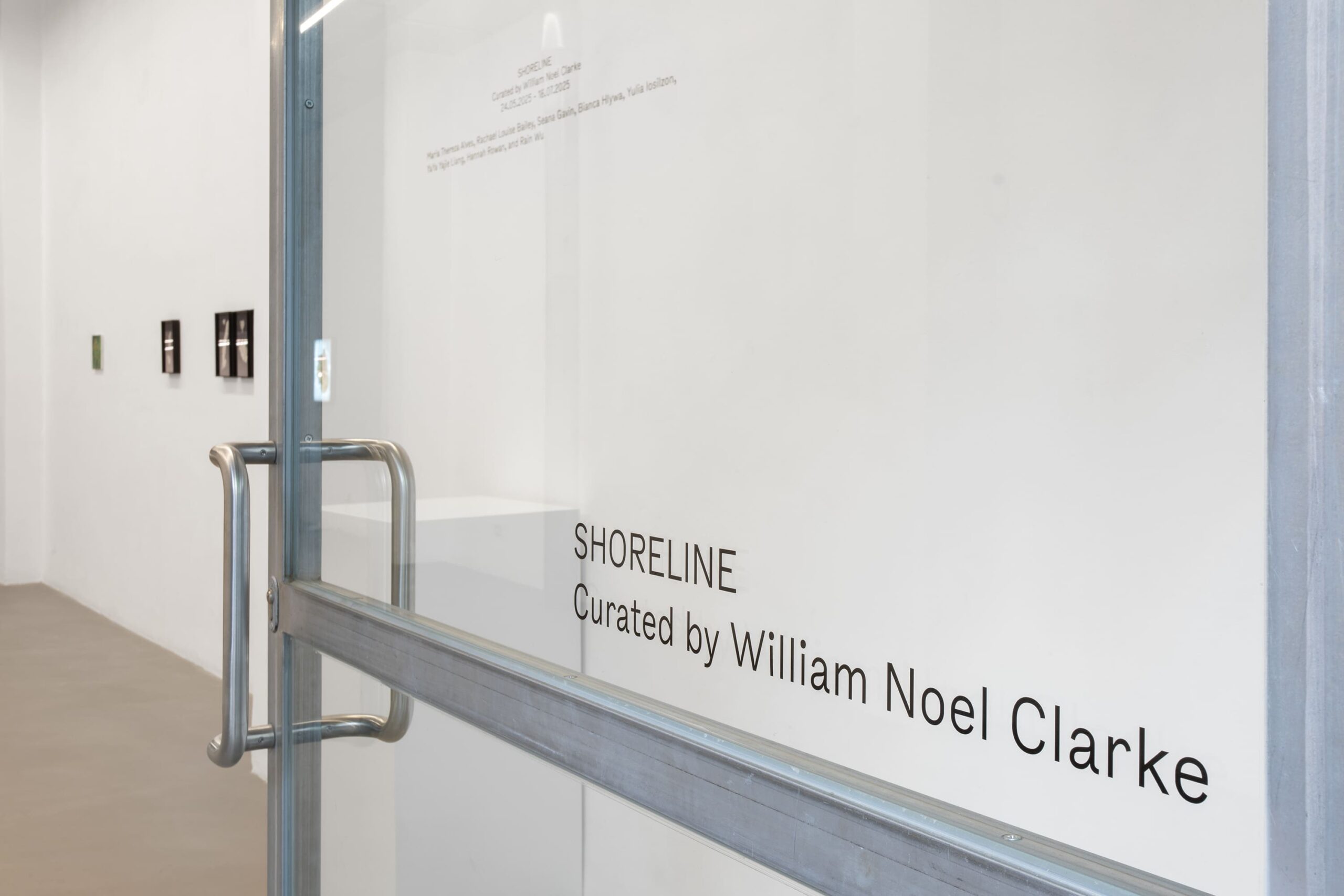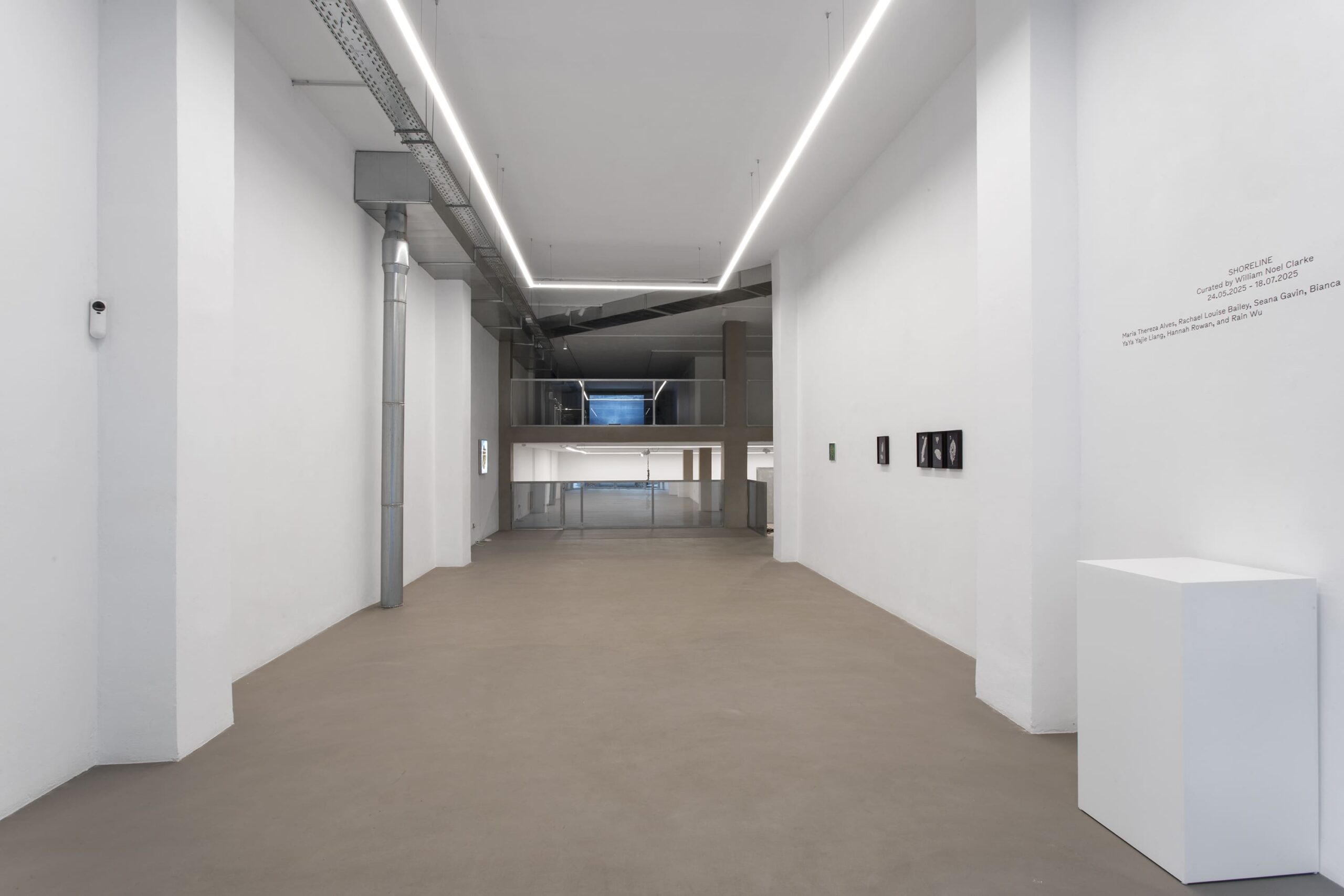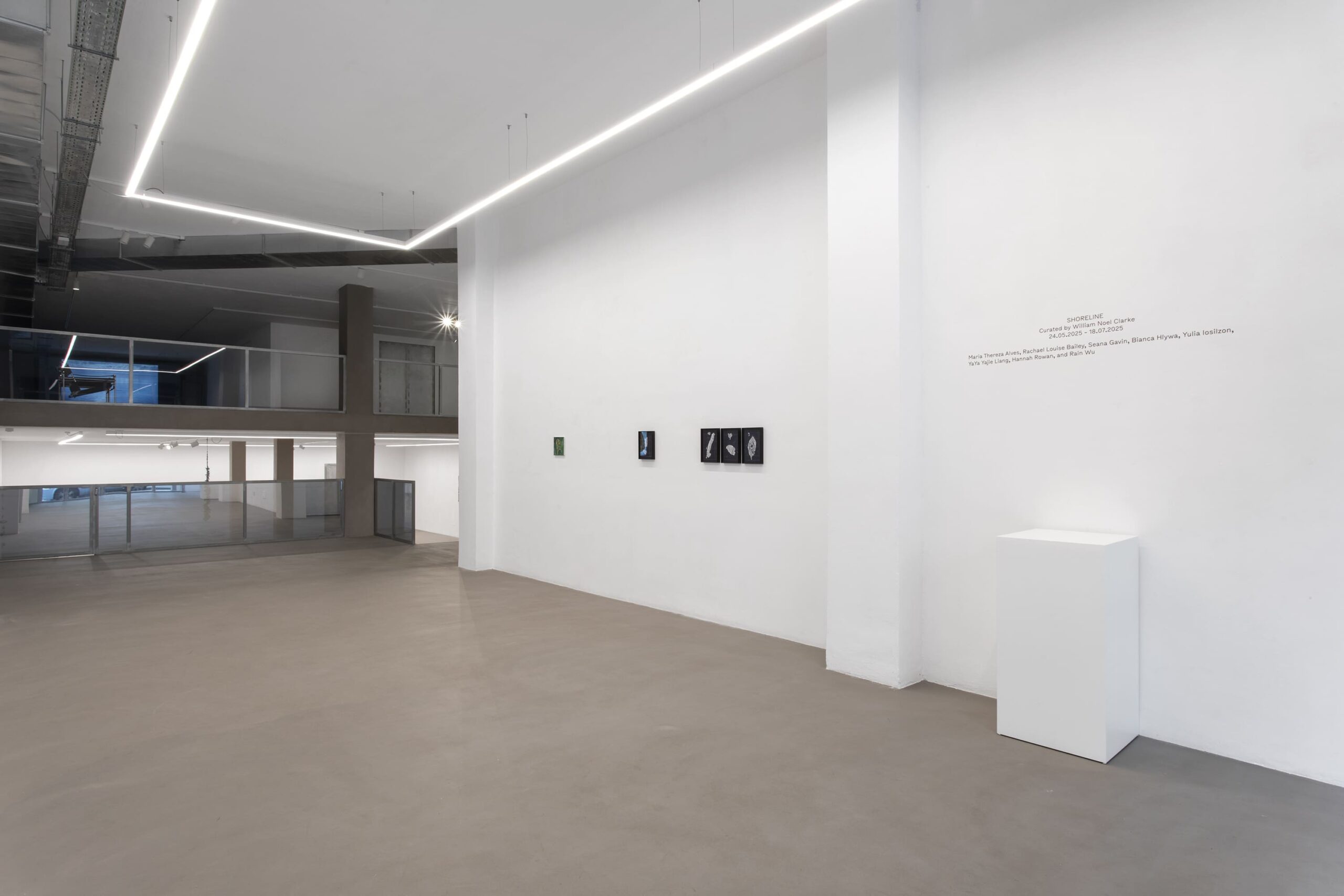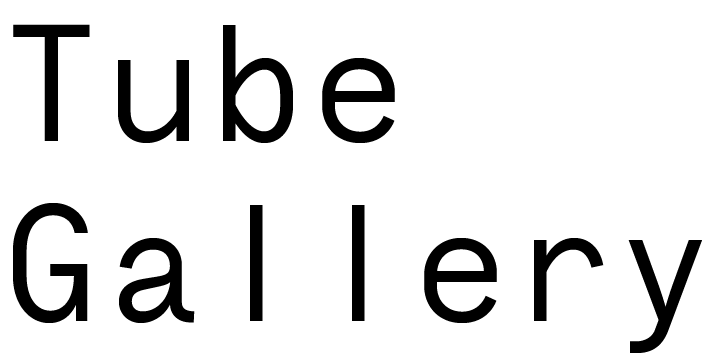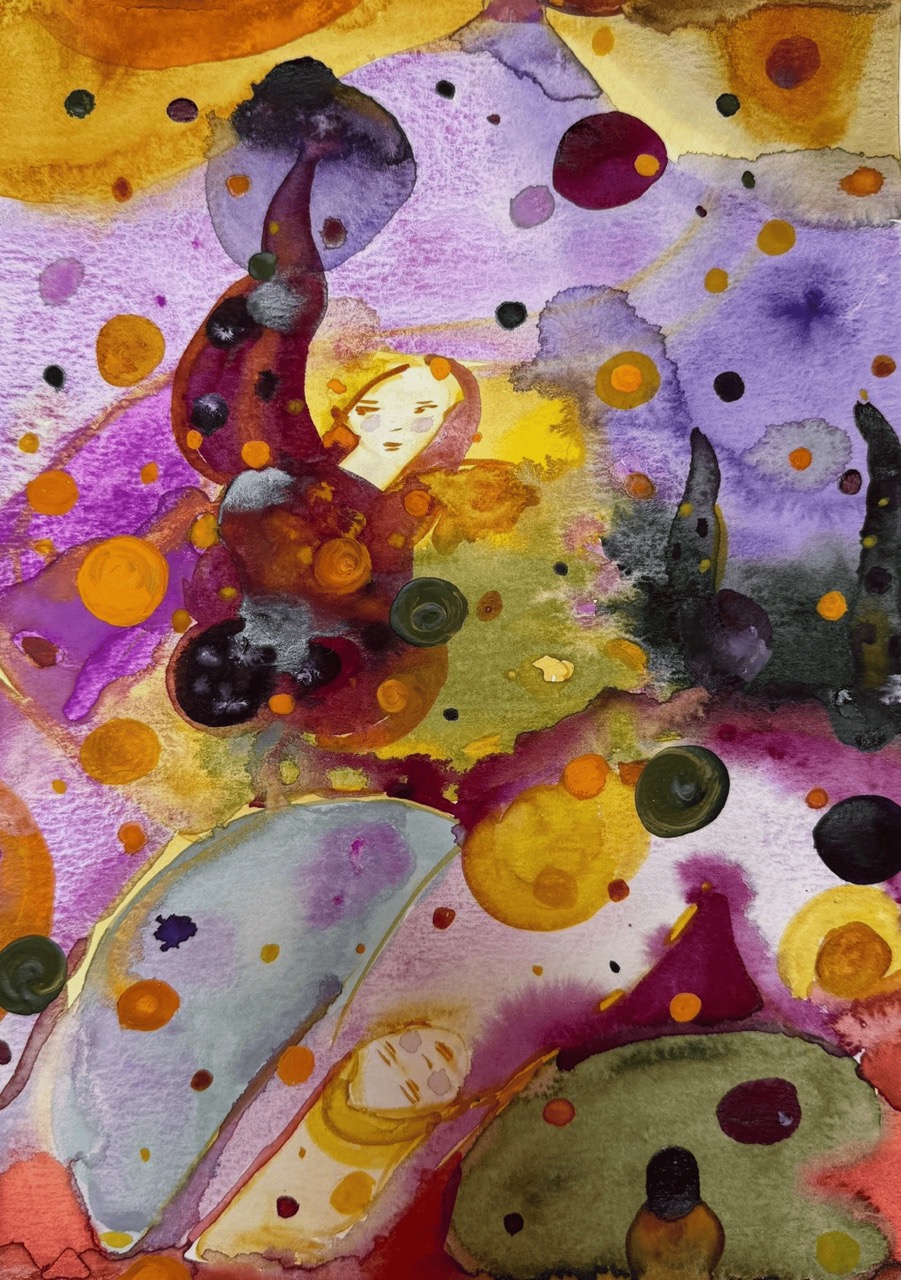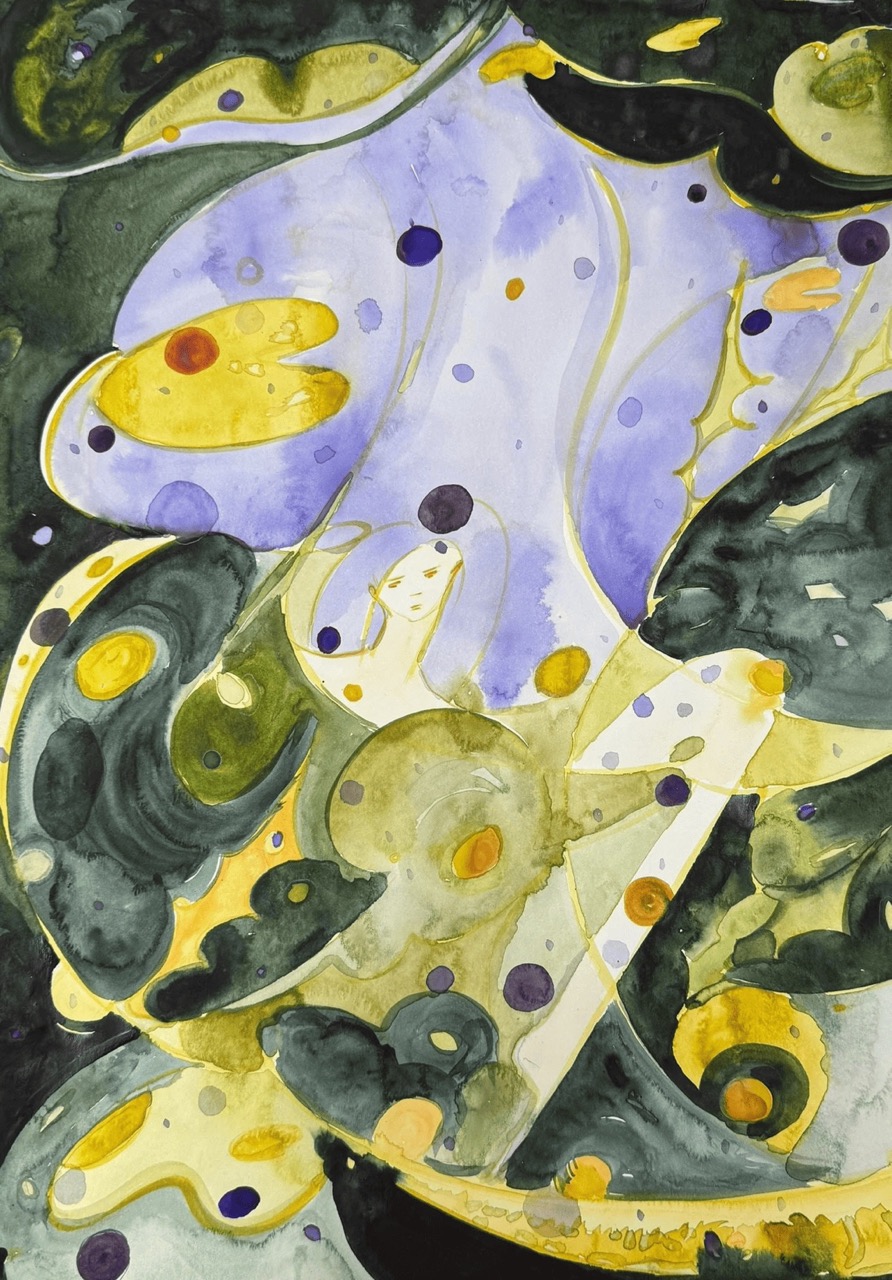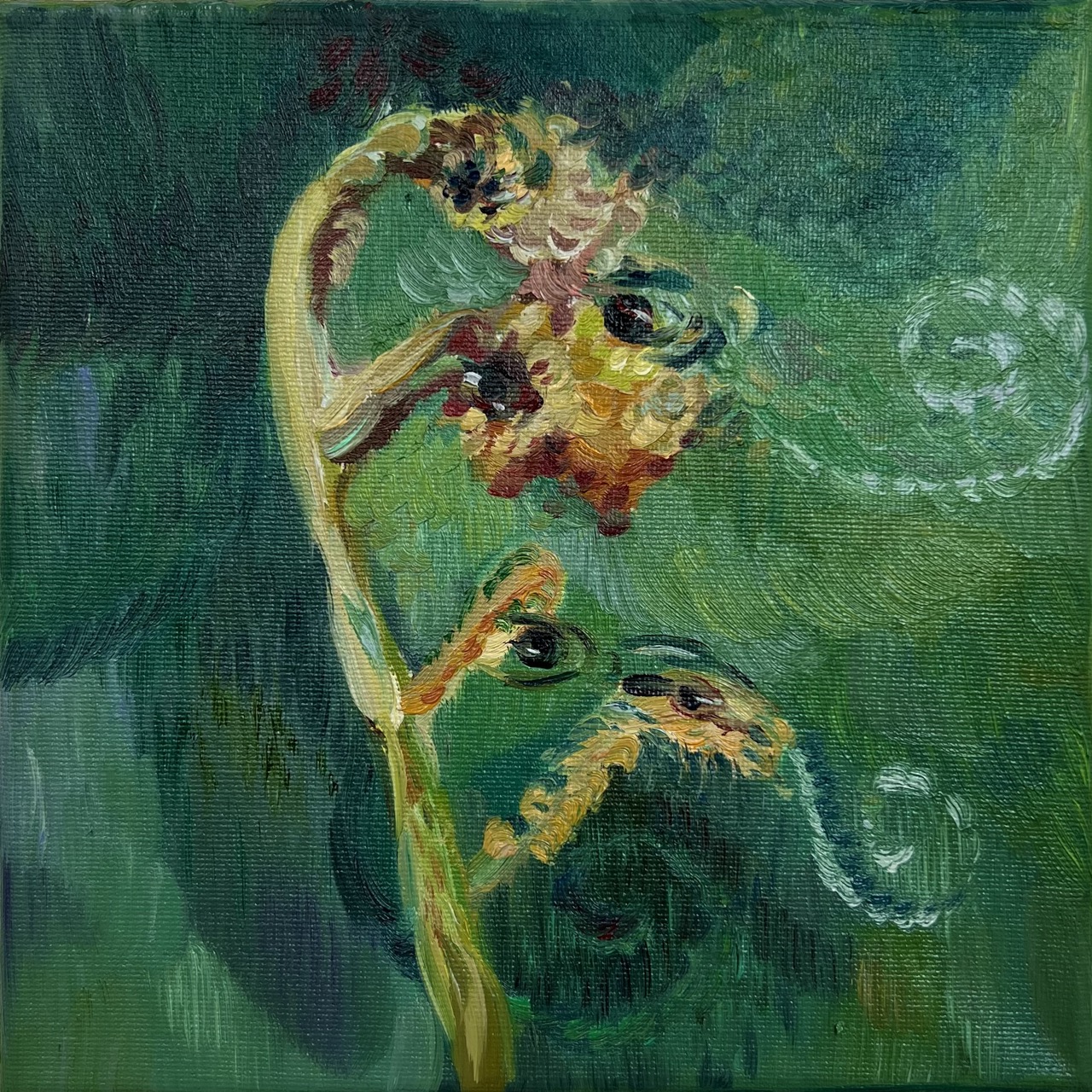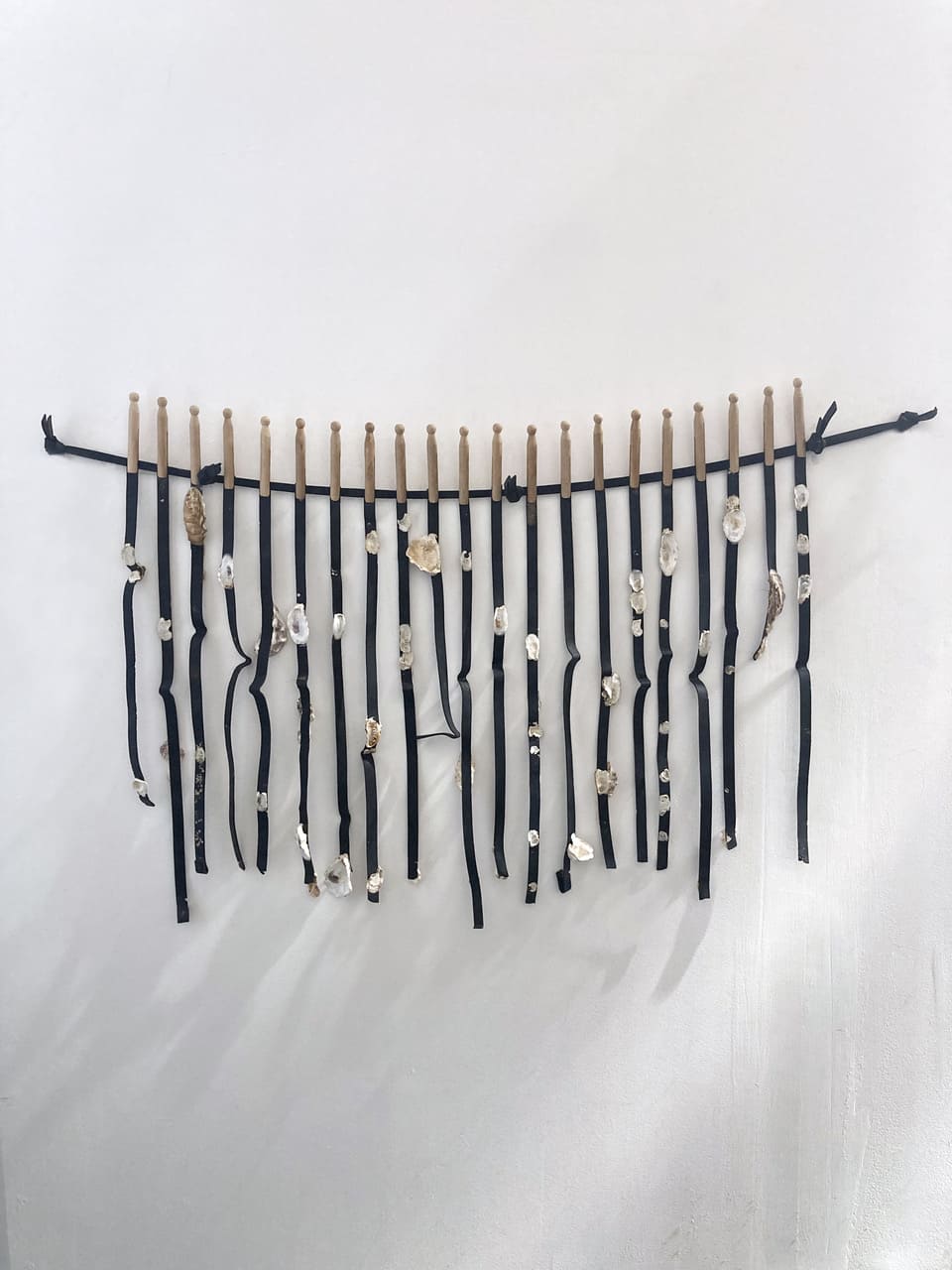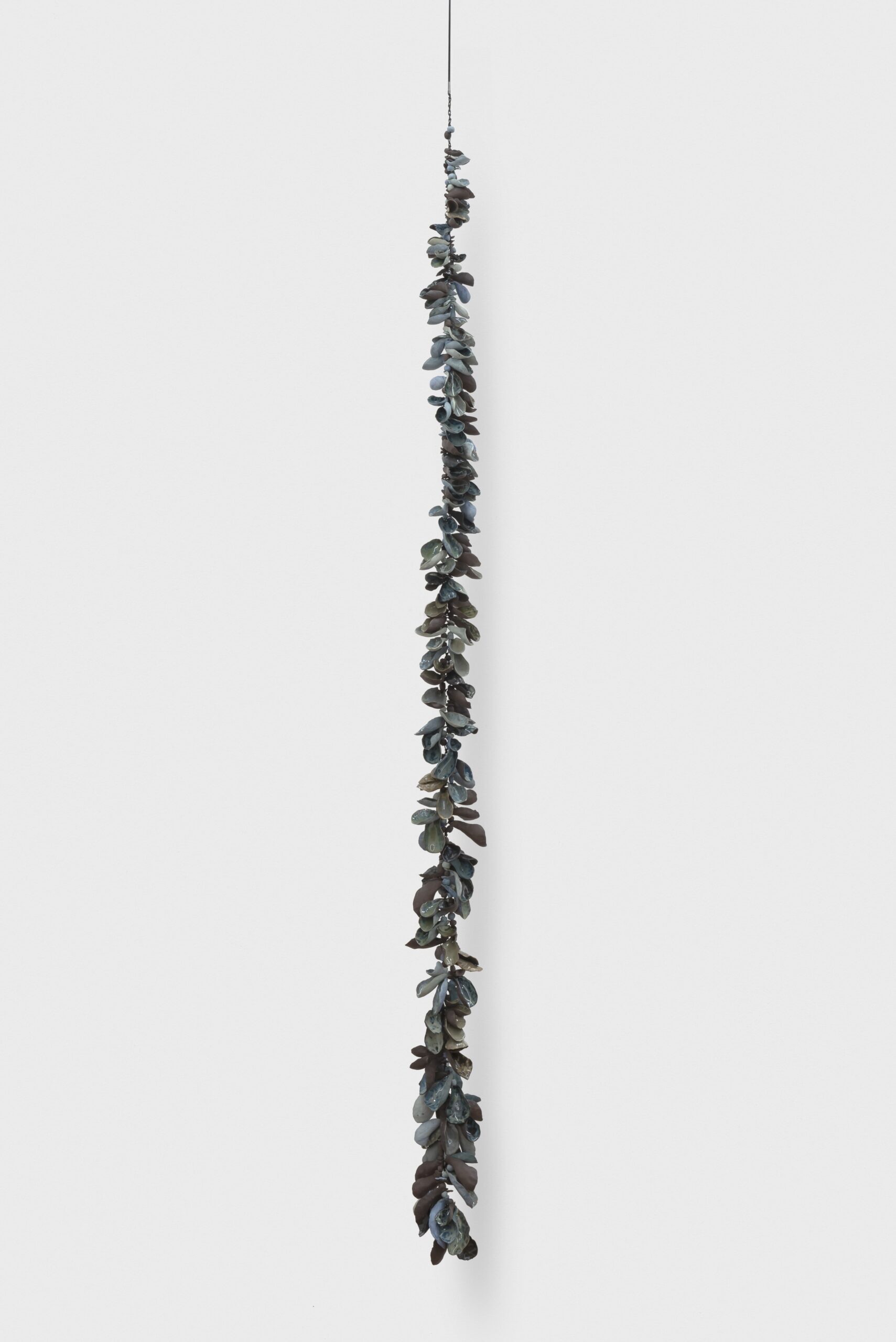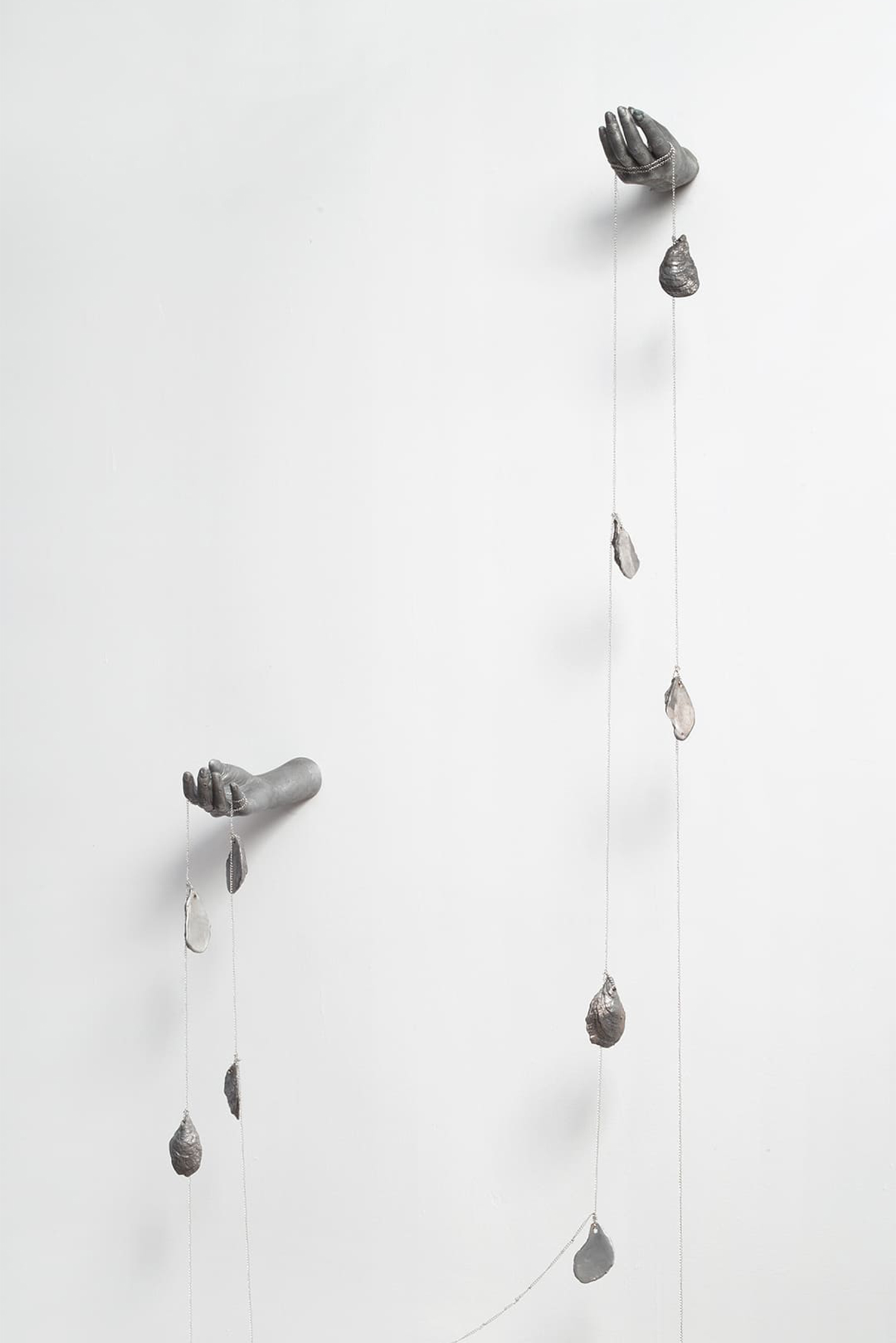Shoreline
Curated by William Noel Clarke
23rd May 2025
With:
Maria Thereza Alves
Rachael Louise Bailey
Seana Gavin
Bianca Hlywa
Yulia Iosilzon
YaYa Yajie Liang
Hannah Rowan
Rain Wu
Shorelines are sites of constant and visible transformation, where change unfolds over hours rather than millennia. They marked the location of the tetrapod’s first uncomfortable, wriggling, and laborious steps within the intertidal zone between 390 and 360 million years ago, and they continue to shape the evolution of life today. As dynamic habitats, shorelines demand continual adaptation from the organisms that inhabit them, responding to shifting tides and changing climates.
Shoreline is an exploration of these singular environments and their relevance to human experience. It addresses the ecological, geopolitical, and aesthetic significance of coastal zones, framing them as natural thresholds and as spaces of “contamination-as-collaboration.”
Providing resilient, diverse ecosystems and acting as natural boundaries, shorelines stand in contrast to the human conception of a border as a fixed and defined separation. Instead, they represent thresholds defined by continuous negotiation. As one description puts it: “It is a site of arrivals and departures, of safe harbours and hostile intrusions. At once embedded in local traditions and subject to industrial development, it hosts encounters between different populations and environments, the terrestrial and the aquatic.”
These points of contact serve as incubators for a remarkable diversity of life, embodying a model of survival and coexistence based on collaboration and symbiosis. As spaces of constant change—and therefore constant vulnerability—Anna Tsing’s concept of contamination as collaboration becomes particularly relevant. Shorelines depend on the evolving relationships and interactions among species, both human and non-human. For instance, tides regulate crab populations by providing birds periodic access to feed on them. Meanwhile, the Gulf of Bothnia, the Red Sea, and the Persian Gulf illustrate how natural coastlines have shaped geopolitical boundaries—many of which now face escalating crises exacerbated by human activity, such as commercial shipping.
The Gallery will be closed for summer holidays in August, to view the exhibtion please book your appointment by planning your visit below.
Having grown up in a seaside town in the UK, Hannah Rowan has long been fascinated by water and its role in connecting humans to the earth. Her works Undersea (2023) and To Hold an Ocean (2023) materialise her research into marine ecosystems and the intertidal zone, exploring notions of time, memory, and the fragility and resilience of aquatic lifeforms. Oyster shells—small enough to fit in the palm of a hand—are central to these works, symbolising “atmospheric memories” carried through water and encoded in calcite layers like geological strata. Beyond their symbolic role, oyster shells actively improve water quality, enhance marine biodiversity, and protect shorelines from flood surges.
In Maria Thereza Alves’s short film Along the Coast (2003), the artist documents a solitary walk during a residency. After days of observing no animals, Alves captures the unexpected appearance of a dolphin, juxtaposed with the image of a dolphin-shaped balloon being sold nearby. This moment highlights both environmental commentary and the problematic human tendency to prioritise the preservation of aesthetically pleasing animals and landscapes—coastal areas often being romanticised for their picturesque qualities in popular media.
It is no coincidence that Shoreline takes place on the island of Mallorca, with its 555 kilometres of coastline. Rain Wu’s series The Sea Rises and Totally Still maps islands using seawater and chalk on blue fabric. Her architectural background and interest in cartography inform these works, referencing the 17th-century “Age of Exploration,” when maps served political agendas and ignored indigenous presence and geological nuance. By using ephemeral materials, Wu underscores the impermanence of coastlines and maps alike—challenging the notion of fixed geographies.
YaYa Yajie Liang’s large-scale paintings depict moments of metamorphosis between human, animal, and mineral forms—paralleling the dynamic transformations of the shoreline, where land and sea continuously interact. Her practice resonates with the concept of assisted evolution, where adaptation is catalysed by natural processes and human influence. Liang’s spontaneous technique, with its fluid brushstrokes and layered textures, mirrors the unpredictable and interdependent life of coastal ecosystems.
In a distinctly experimental approach, Bianca Hylwa works with SCOBY (Symbiotic Culture of Bacteria and Yeast). Her piece Trek Trax features a dried SCOBY sculpted into a partially anatomical, partially clothed figure, flipping backward. The body—a mix of ribs, hip bones, flesh, socks, and trainers—blends into a coastal backdrop. This work engages with natural cycles of decay and erosion, suggesting that both human bodies and commodities are ultimately material entities, stripped of identity and subject to transformation by the elements.
Seana Gavin explores memory and alternate realities through surreal collage. Her dreamlike compositions evoke the fluid boundaries of shorelines, suggesting the multiplicity and interconnectivity of natural systems. After the Floods (2017) directly addresses climate change and its impact on coastlines, using found images to depict the aftermath of erosion and rising waters.
Yulia Iosilzon presents two new paintings on paper that conjure fantastical, liminal worlds inhabited by amorphous figures. Her vibrant, idealised portrayals of nature invite viewers to recognise the overlooked beauty in the contemporary world. In light of environmental degradation—particularly in coastal regions—her work serves as a reminder of what is at risk of being lost.
Since 2015, Rachael Louise Bailey has investigated a specific marine pollutant she refers to as “The Black Stuff”: repurposed car tyre inner tubes used in oyster farming. Often unfit for long-term use, these materials detach, sink, or wash ashore. In her works Cohabitation (2017) and Rest (2019), Bailey engages with themes of waste, grief, and the synthetic legacy of consumption. Rest emerged after the sudden death of the artist’s cousin, as she sorted through the plastic remains of a life. The resulting sculptural figure—composed of a coat hanger for a collarbone, a bike helmet for a chest, an alarm clock for a heart, and pen fingers—is dressed in a suit, Santa hat, and shrouded in polyester, resting in a plastic inflatable mattress wrapped in “black stuff.” The piece speaks to memory, mourning, and the enduring presence of synthetic materials in life and death.
Featured Works
